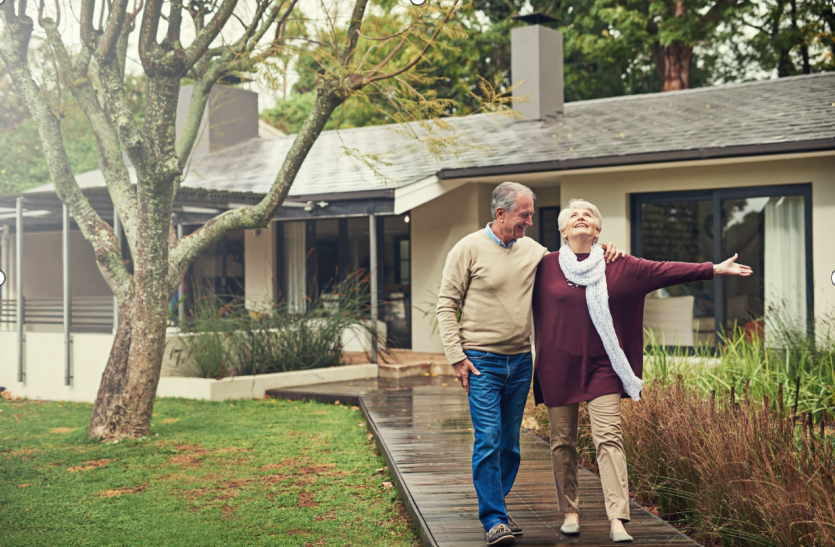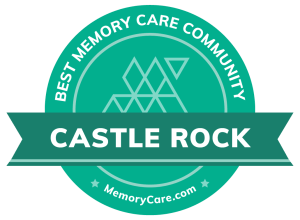BLOG
Finding the Right Fit: How to Evaluate an Assisted Living Community's Culture
Selecting an assisted living community involves more than assessing amenities and care services; it's crucial to consider the community's culture. A good cultural fit ensures residents feel comfortable, engaged, and valued in their new environment. Understanding and evaluating this cultural aspect can significantly impact a senior's quality of life.
Evaluating a community's culture involves observing daily interactions, activities, and atmosphere. It's essential to align the community's values and practices with the prospective resident's personal preferences and needs.
The Importance of Cultural Fit in Assisted Living
Cultural fit in an assisted living community refers to how well a resident's values, interests, and lifestyle align with the community's environment and practices. A harmonious fit can lead to increased satisfaction, better social integration, and overall improved well-being. Conversely, a mismatch may result in feelings of isolation or discomfort. Therefore, assessing cultural fit is a critical step in the selection process.
Research indicates that in 2022, over one million residents will live in assisted living communities across the United States. With such a diverse population, communities vary widely in their cultural dynamics. Understanding these differences helps in identifying a setting where the resident will thrive. Social activities, community values, and resident demographics significantly define a community's culture.
A well-matched cultural environment fosters meaningful relationships and a sense of belonging. Residents are more likely to engage in activities, maintain social connections, and experience enhanced mental health. Families should prioritize cultural compatibility to ensure their loved ones feel at home in their new community.
Assessing Community Values and Mission
A community's values and mission statement offer insight into its cultural foundation. These elements reflect the principles and goals that guide daily operations and resident interactions. Reviewing the mission statement can reveal the community's commitment to person-centered care and overall philosophy. It's advisable to request this information during the evaluation process.
For instance, Assured Senior Living emphasizes improving residents' quality of life through compassionate, personalized care. This focus indicates a culture centered on resident well-being and individualized attention. Understanding such commitments helps determine if the community's values align with the prospective resident's expectations. A mission that resonates with the residents' beliefs can enhance their sense of purpose and belonging.
It is equally important to observe how staff members embody these values in their interactions. Consistent, respectful, and empathetic communication reflects a positive culture. During visits, pay attention to how staff members engage with residents and each other. This behavior provides tangible evidence of the community's values in action.
Additionally, consider how the community incorporates resident feedback into its practices. A culture that values input and adapts accordingly demonstrates flexibility and respect for individual preferences. Such environments are more likely to provide personalized care that aligns with residents' needs. Engaging with current residents and their families can offer perspectives on how the community upholds its stated values.
Evaluating Social Activities and Engagement in Assisted Living
Social activities are a cornerstone of community culture and significantly impact residents' quality of life. A diverse and well-planned activity schedule promotes socialization, mental stimulation, and physical health. When evaluating an assisted living community, examine the variety and frequency of activities offered and ensure they align with the residents' interests and capabilities.

Communities prioritizing resident engagement often have dedicated staff for organizing events and programs. These may include fitness classes, art workshops, educational seminars, and social gatherings. Participation in such activities fosters a sense of community and belonging. It's beneficial to review activity calendars and observe events during community visits.
Involving residents in the planning process reflects a culture of inclusivity and respect for individual preferences. This practice ensures that activities remain relevant and enjoyable for the community members. Engagement in meaningful activities has been linked to improved mental health and reduced feelings of isolation among seniors. Therefore, assessing the community's approach to social programming is vital.
Additionally, consider the availability of communal spaces that encourage spontaneous interactions. Areas such as lounges, gardens, and dining halls serve as hubs for socialization. The design and accessibility of these spaces can influence the ease with which residents connect with one another. A thoughtfully designed environment supports a vibrant social culture.
Observing Staff-Resident Interactions in Assisted Living
The nature of interactions between staff and residents directly reflects the community’s culture. Positive, respectful, and compassionate communication indicates a supportive environment. During visits, observe how staff address residents, noting the tone and demeanor used. Consistent, personalized interactions suggest a strong rapport and commitment to individualized care.
Staff training and retention rates can also provide insight into the community’s operational culture. Communities that invest in ongoing education and support for their staff often maintain higher standards of care.
Low turnover rates suggest a stable, well-trained workforce that values resident relationships. Asking about staff development programs can help determine whether the community prioritizes continued improvement.
It is also important to assess staff responsiveness to resident needs. Prompt attention to requests, active listening, and problem-solving demonstrate a commitment to high-quality care. Residents should feel comfortable approaching staff with concerns and receiving timely assistance. A strong culture of support ensures a positive daily experience for residents.
Finally, evaluate whether the staff fosters an inclusive and engaging atmosphere. Staff members who encourage participation, facilitate conversations, and create a welcoming environment enhance social well-being. Their enthusiasm and professionalism contribute to a vibrant, caring culture.
Considering Resident Demographics and Peer Compatibility
Resident demographics can determine cultural fit within an assisted living community. Seniors often feel most comfortable in an environment where they can relate to their peers. Age range, backgrounds, and shared interests among residents can significantly impact social satisfaction. A strong peer connection fosters friendships and a sense of belonging.
Communities often provide demographic data on their resident population. Some may have a higher percentage of active seniors, while others focus more on memory care or medical support. Understanding these distinctions helps families match their loved ones with a community suited to their needs. Aligning with a compatible peer group can enhance engagement and well-being.

Lifestyle preferences also contribute to cultural fit. Some communities emphasize active living with frequent outings and recreational programs, while others prioritize quiet, homelike environments that focus on personalized care. Evaluating which setting aligns with a senior’s personality and interests ensures long-term comfort.
Additionally, it is helpful to observe how new residents are welcomed into the community. A strong culture will have systems in place to integrate newcomers through mentorship programs or social events. Feeling included from the start can ease the transition and promote a positive experience.
Examining Dining Services and Mealtime Atmosphere
Mealtime is a central part of daily life in an assisted living community, making dining services an essential aspect of cultural fit. The quality, variety, and flexibility of the meal options contribute to resident satisfaction. A well-structured dining program accommodates dietary needs while providing enjoyable, social mealtime experiences. The ability to personalize meals can enhance the overall experience.
Beyond food quality, the dining atmosphere impacts residents' comfort and engagement. Some communities have formal dining settings with scheduled meal times, while others offer flexible, casual options. Observing how residents interact during meals can reveal the community’s social culture. A warm and inviting dining space encourages socialization and meaningful connections.
Assessing whether the community accommodates personal dietary restrictions and preferences is also essential. Many seniors have medical conditions that require specialized nutrition plans. A community that strongly emphasizes individualized meal planning ensures that all residents receive proper nourishment. Families should inquire about menu variety and meal customization options.
Additionally, consider whether alternative dining options, such as snack bars or room service, are available. Some seniors prefer smaller meals throughout the day rather than structured dining times. Offering multiple dining choices reflects a culture that prioritizes resident preferences. A flexible and accommodating approach to meals supports a higher quality of life.
Make an Informed Decision
Finding an assisted living community that is the right cultural fit requires careful evaluation of multiple factors. A well-matched community fosters residents' sense of belonging, comfort, and fulfillment. Families should take the time to visit, observe, and ask questions to ensure a good fit. Researching the community’s values, social environment, and care philosophy can provide valuable insights.
Assured Senior Living prioritizes personalized care, meaningful engagement, and a homelike atmosphere for its residents. By focusing on individual preferences and providing high-quality support, the community ensures that each resident feels valued and connected. Contact Assured Senior Living today to learn more about its approach to compassionate, resident-centered care.















